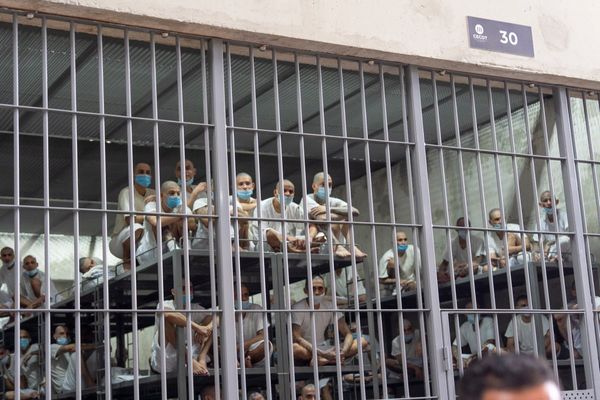
In a normal presidential election year in the United States, the primary season helps to winnow down the fields of Democratic and Republican candidates, until there is only one of each left.
But the 2024 primaries were different. Even before the first state vote was held, the outcome was clear: President Joe Biden was headed to a rematch against former President Donald Trump.
“This primary season was particularly unusual,” Tim Hagle, a political science professor at the University of Iowa, said.
“In part, that was because there seemed little doubt as to who would be the nominee for each party.”
On Tuesday, the presidential primary season winds to an inconspicuous close, with low-stakes votes in the final four states: Montana, New Jersey, New Mexico and South Dakota, plus the District of Columbia. Only Guam and the Virgin Islands vote later.
But experts said the greatest takeaway from this year’s presidential primaries was not who would ultimately nab each party’s nomination. It was what each state-level vote revealed about the campaigns to come.

Trump’s ‘death grip’
The primary season began on January 15, when Iowa held its traditional first-in-the-nation caucus in the race for the Republican nomination.
The field of Republican candidates was initially broad. More than a dozen hopefuls launched a bid, ranging from Miami Mayor Francis Suarez to Trump’s former Vice President Mike Pence.
Some political observers speculated early on that Florida Governor Ron DeSantis, a rising conservative star, could challenge Trump for the Republican nomination.
But as the Iowa caucus approached, the polls were were clear: Trump maintained a seemingly insurmountable lead over all his challengers.
A December survey from Reuters and Ipsos, for example, found that 61 percent of Republicans supported Trump. His next closest rivals, DeSantis and former United Nations ambassador Nikki Haley, only marshalled 11 percent each.
As a result, even before the first primary vote was cast, Republican candidates began dropping out of the race. Shortly after the Iowa caucus, the field contracted even more, leaving only Trump and Haley in the running for the second contest of the primary calendar, in New Hampshire.
For Steffen Schmidt, a political science professor at Iowa State University, the lesson was that little could dent Trump’s standing among Republican voters.
Trump, after all, faced four criminal indictments during the primary calendar. One of those indictments led to a trial that concluded last month with convictions on 34 felony counts, related to a hush-money payment made to an adult film star.
“We have learned that court cases and extra-marital sex and ‘payoffs’ can’t shake support by candidates with a passionate base,” Schmidt told Al Jazeera.
Still, Schmidt added that it was “very strange” that a high-profile candidate like Trump can joke “about becoming a dictator” — and face few repercussions at the ballot box.
Some critics have pointed out that Haley’s attempts to challenge Trump exposed weaknesses in the former president’s bid for re-election. For instance, she beat Trump in two moderate-leaning areas, the District of Columbia and Vermont.
And even after suspending her campaign in March, Haley continued to draw votes away from the Trump campaign. She scored 21 percent of the vote in Indiana’s primary, and more than 16 percent in the pivotal swing state of Pennsylvania.
With November’s presidential race likely to come down to a few key battleground states, those “zombie votes” for Haley’s long-defunct campaign were widely interpreted as a signal of displeasure with Trump.
Still, months after leaving the race, Haley announced last month that she, too, would vote for Trump — an indication that even the former president’s Republican critics were willing to back him.
“The Republican primaries have taught us that Donald Trump has a death grip on his party,” said Richard F Bensel, a professor of government at Cornell University.
”There is no one in the party who can effectively stand up against him, and even his strongest opponents, such as Nikki Haley, have ultimately capitulated as they pursued their own individual ambitions.”

Biden ‘difficult to replace’
On the Democratic side, the protest vote has been even more prominent.
Biden, the incumbent president, has faced backlash from within his own party over issues like Israel’s war in Gaza and immigration. The Gaza war, in particular, spurred the formation of a protest movement centred on the primary season.
Starting with February’s Michigan primary, organisers pushed Democratic voters to select options like the “uncommitted” category on their ballots, rather than throw their support behind Biden.
In Michigan, the “uncommitted” movement nabbed nearly 101,000 votes and two party delegates out of a total of 117. In another key toss-up state, Wisconsin, the Democratic primary saw more than 47,800 voters cast ballots for the “uninstructed” category.
Critics warned, as with Trump, that even small losses in support could have grave implications for November’s general election.
But the protest vote had relatively little effect on the outcome of the primaries themselves.
Biden was considered a shoo-in: No incumbent has ever lost in the modern primary system, and only once in US history has an elected incumbent failed to earn his party’s nod.
“The Democratic primaries have revealed, once more, that an incumbent president is very difficult to replace even when he is very unpopular,” Bensel, the Cornell professor, told Al Jazeera.
Bensel added, “In a sense, the Democratic Party is walking a plank on what amounts to a sinking ship.”
A May poll from Reuters and Ipsos found that just 36 percent of Americans approved of Biden’s job performance.
Still, experts said no viable Democratic candidates emerged to challenge the president as he sought his second term.
Before the primaries even began, former environmental activist and conspiracy theorist Robert F Kennedy Jr withdrew from the Democratic race, running instead as an independent.
That left little-known contenders like self-help author Marianne Williamson and Representative Dean Phillips to compete against Biden in the primaries.
“It was surprising that no Democrats who would be considered serious candidates were willing to challenge Biden,” said Hagle, the University of Iowa professor. “Perhaps it didn’t seem as clear to Democrats that they will lose the general election in 2024, given that they believe they can beat Trump.”

Down to ‘two unpopular, ageing politicians’
Polls currently show Biden and Trump in a tight race for the November election. Both have secured the number of delegates needed in the primary season to be their party’s nominee.
The latest poll from Reuters and Ipsos found the two candidates “statistically tied if the election for president were held today”. Biden held a slight lead, with 41 percent support to Trump’s 39 percent.
Ken Kollman, a political science professor at the University of Michigan, said the primaries emphasised that — despite rumblings of discontent about the two candidates — they are both here to stay.
“As much as many wanted otherwise, voters learned that these two unpopular, ageing politicians are not going away and that they are headed toward a massively consequential showdown in November,” Kollman told Al Jazeera.
“Both tenaciously held on to their leadership of their respective parties, and neither have escaped the divisions and lack of enthusiasm among portions of electorates within their parties.”
Dennis J Goldford, a political science professor at Drake University, echoed that sentiment.
He told Al Jazeera that both Democrats and Republicans emerged from the primaries “with a nominee who does not excite a majority of each party”.
But he underscored that there is a limit to how predictive primaries are for the general election. The number of voters who cast ballots in primaries and caucuses can be comparatively low.
“Americans talk a lot about the right to vote, but we don’t really mean it. On a national basis, we get perhaps a 60-percent turnout for presidential elections, a 40-percent turnout for midterm elections and a 20-percent turnout for primaries,” Goldford said.
He added that many voting trends have remained consistent in the presidential race so far.
“Republicans take voting more seriously than Democrats; older people take voting more seriously than younger people; and partisans take voting more seriously than independents,” Goldford explained.
But, he added, there could be some shifts ahead in traditional voting blocs. “The interesting question is whether the supposed movement of traditional Democratic constituencies — Blacks and Latinos — toward Trump is real.”
Ultimately, many of the experts who spoke to Al Jazeera said the unusual primary season is a symptom of an unusual presidential race overall.
Never before has a former US president faced criminal charges — much less during an election cycle. And the last time the presidential election was a rematch of the previous race was in 1956.
For Schmidt, election forecasts function like weather forecasts: “Predicting depends on continuity and some replication of the past.”
But this year? “We have none of that.”







